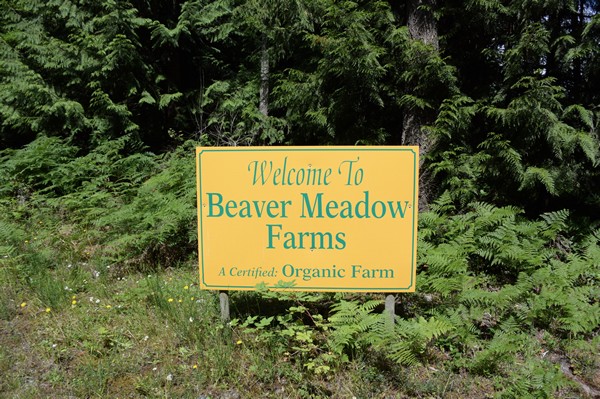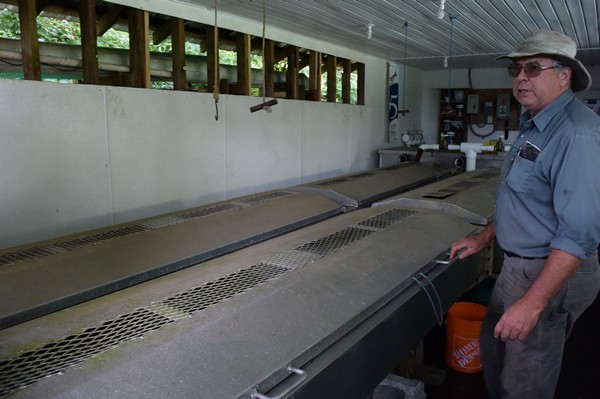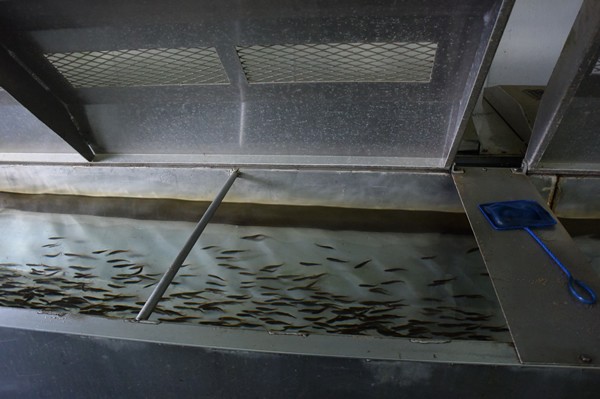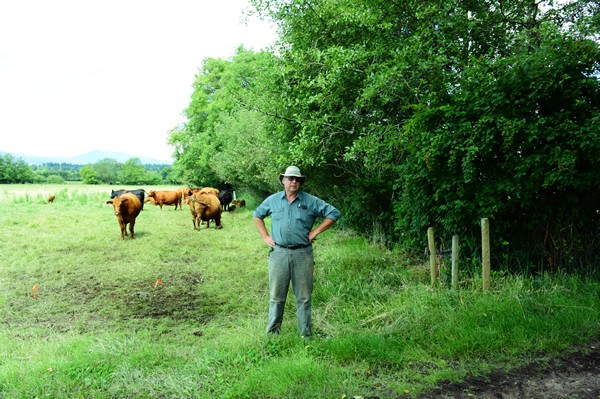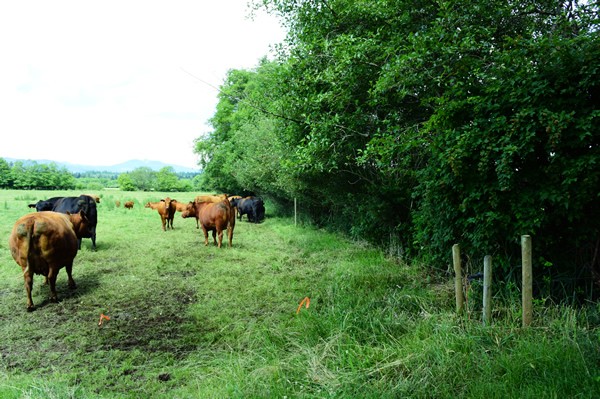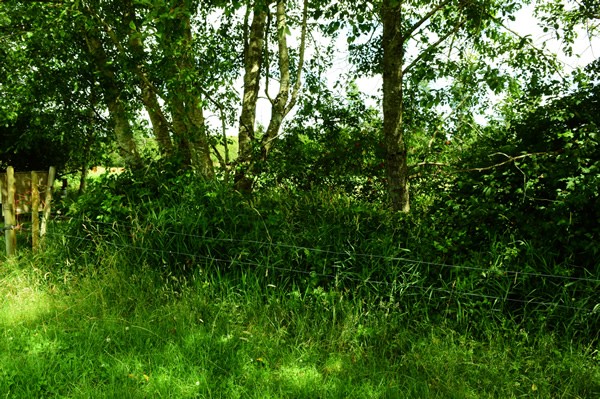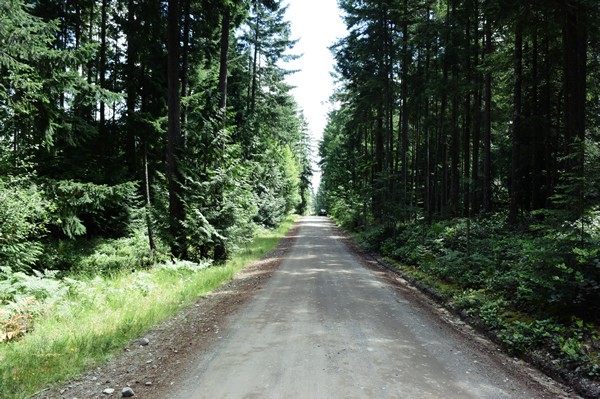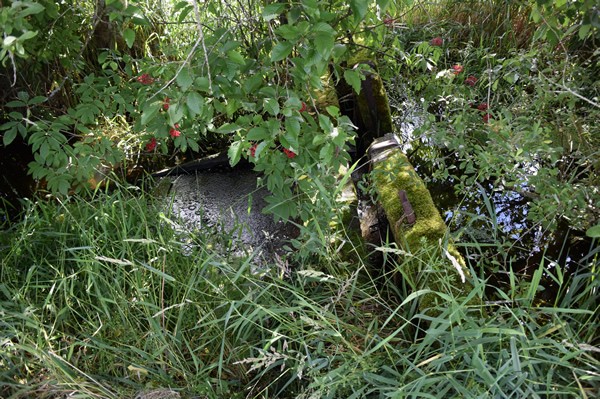Site Description
Name of the site: Beaver Meadows Farm
Address: Comox Valley
Size: 600 acres
Type of production: Angus Beef (500 head)
Number of people employed: 4
Owned property since the 1930s
“This farm has been practicing conservation and protection of coho and chum for over 40 years.”
~Edgar Smith
Stewardship Practices Guides
The following guides are relevant to this project site
- Riparian Areas in Settled Landscapes
- Guidance for Restoration Activities in Riparian Areas
- Drainage Maintenance in Agricultural Waterways
Click to download the table for stewardship practices at the Beaver Meadows Farm.
Stewardship project partner:
Little River Enhancement Society
Project Overview:
The Smiths have worked to protect the riparian habitat on their farm for over 40 years. Edgar’s father started the Little River Enhancement Society to restore and protect the Little River.
When my father and his friends started working on restoring salmonid habitat about 40 years ago, they formed a society and it’s called the: Little River Enhancement Society. It’s a group of about 50 volunteers, the farm is also a member of the society, so together we have been able to do habitat enhancement from the estuary all the way up to the headwaters.
The work included creating salmon habitat for 6 kilometres of the Little River and the creation of a salmon hatchery on the Beaver Meadows Farm. The Little River Enhancement Society also created weirs that imitate beaver dams and create more fish habitat. Today, Edgar and his family ensure the continued protection of the riparian areas and the fish that depend on this habitat. The Smith’s also operate 500 head of cattle and are certified organic, SPCA approved, Salmon Safe, and are Conservation Partners.
Champions
Edgar Smith and his family are the land owners and ranchers for this site.
Motivation
Over the past 80 years, the Smiths have changed the way they farm but in general they have focused on leaving the land in a better state every generation.
So that when my grandfather started, till where my children, my grandchildren, maybe involved, we think we’ve improved a lot of the natural activities that are now occurring here. We look to pass it on in a better condition, a self-sufficient condition, than when we took it over from our family.
More recently, the farm has concentrated on following as many natural practices as possible, such as riparian protection, while minimizing the ‘input of energy’ from outside sources. The Smiths aim to manage their farm in a way where all parts of the farm work together.
We call it holistic, natural, farming system, everything has to fit together and there’s no one part of the farm that’s really more important than the other. Our assistance as humans is to make the pieces fit together in a more fluid fashion, a more workable fashion as we understand the natural processes that are undergoing in the soil, in the water, or in the forest, or whatever.
Challenges
The largest threat facing riparian areas on the Smith’s farm is the prospect of Edgar and his brothers retiring. The Smith’s children aren’t likely to take over the family farm and they are struggling to find a buyer who would continue using the stewardship practices they employ.
This farm is most probably going to go out of production when my brothers and I get so old we can’t do it and nobody has bought it.
Edgar worries about what could happen if they were to sell to a farmer who did not use similar stewardship practices.
It only takes one farmer to come along …. and start spraying chemicals and fertilizers and running off into creek and ditches again.
Edgar is also concerned that some the stewardship practices they implement aren’t rewarded by consumers. To distinguish their products, the Smiths are certified organic, Salmon Safe, SPCA approved, and a Conservation Partner but in some cases they are unsure whether they receive any retail benefit from the labelling. These stewardship programs can also take valuable time and increase paperwork.
It doesn’t establish your products that much more advantageously over a farmer that isn’t Salmon Safe or a conservation partner, the awareness is very low in the market place. Each time you do a program like that, it takes 1 or 2 days a year, and you have to find time to work it into your farming program.
Outcomes
The Smith’s management practices, including the restoration and protection of riparian habitat, has created an environment where wildlife flourish. The farm is home to bears, deer, frogs, birds, eels, and of course a huge number of fish.
When we did some monitoring, the Little River was deemed to be one of the most productive salmonid streams on the East coast of Vancouver Island on a square meter basis. Some years we release 3 million pink salmon, 2 million chum, up to 1.5 million Coho, and 40,000 or 50,000 cutthroat trout a year.
Edgar has identified a population of Northern red-legged frogs on the property, which is a species at risk and listed as Special Concern. He is concerned that the population may be threatened by the increasing number of invasive American bullfrogs moving into the area.
I don’t know if they’re increasing or decreasing, what I have noticed in the last three years we have now the invasive American bullfrogs here, and I suspicious that they are going to make an impact on the red-legged frogs but I haven’t been able to establish if that is occurring.
Apart from the environmental benefits associated with using these stewardship practices, Edgar feels that by farming in a ‘natural fashion’ they have been able to benefit financially.
By learning to farm in this manner, we have improved our bottom financial line, by reducing costs phenomenally, and increasing our returns, so for us there is a financial benefit, but it took years and years to achieve that. We discovered a way that was financially more sound and more efficient for ourselves.
Participation in the Little River Enhancement Society has also increased public support for the farm and its operations. In one case, large urban developments threatened to divert a large amount of water away from the Little River. Because of the large community support generated by the Little River Enhancement Society, city bylaws were changed to preserve the flow of the river.
[T]hat’s really the biggest benefit for us for the farm, for participating in all that stuff, it helps us to conserve the resources that are important to the farm. Otherwise we wouldn’t, they would have built wall to wall houses, water would of gone down storm drains and our creek would of dried up. We wouldn’t have water here.
Stewardship Practices Menu
Learn more about Species at Risk
Stewardship Practices Case Studies
Fraser Valley & Lower Mainland Sites
Kootenay Sites
Okanagan Sites
Vancouver Island Sites
Contact Information
Find us on social media
LinkedIn: @StewardshipCentreBC YouTube: @stewardshipcentreforbc1047 Instagram: @StewardshipBC

